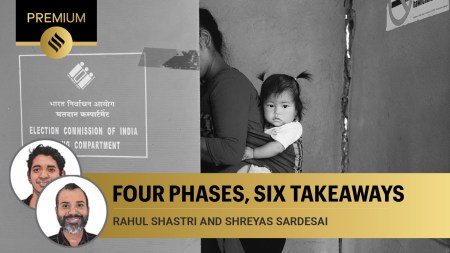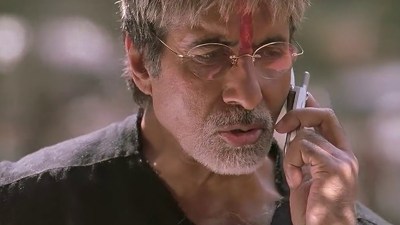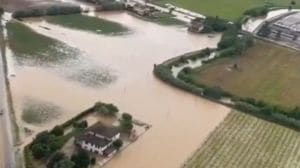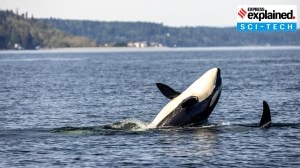- India
- International
Disaster in the Himalayas: No one likes to say that tourism brings trouble
Policy is governed by the perception that the tourism industry is the key to prosperity. An important element of this perception is the underestimation of the cost of unbridled tourism for the fragile Himalayan ecology
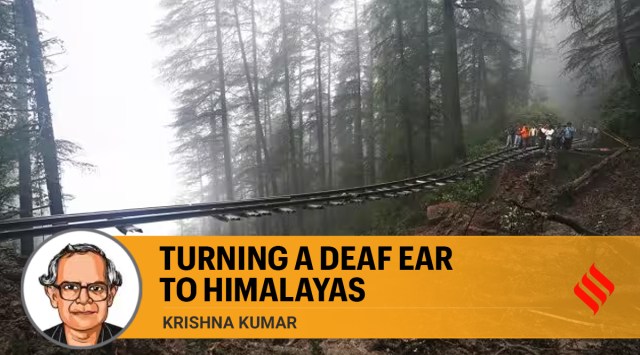 A portion of the Shimla-Kalka heritage railway track that got washed away following heavy rainfall on the outskirts of Shimla, Himachal Pradesh state, Monday, Aug.14, 2023. (AP Photo
A portion of the Shimla-Kalka heritage railway track that got washed away following heavy rainfall on the outskirts of Shimla, Himachal Pradesh state, Monday, Aug.14, 2023. (AP Photo If Sisyphus were to visit a Himalayan hill station today, he would feel strangely at home. He is known for the unending punishment he went through, pushing a heavy rock uphill, only to find that it would roll down after reaching the top. That is precisely the sight you see on mountain highways like the one connecting Kalka with Shimla. A few years ago, it was widened to provide the luxury of four-lane driving. The violent engineering done to achieve this goal has never ceased. The sharply sliced slopes keep tumbling down on the shining highway. Labourers and their contractors return to clear the debris. This year’s heavy rains have made the Sisyphean sight more ubiquitous. All major tourist destinations in Himachal Pradesh and Uttarakhand are facing intermittent distress and closure.
Cutting down the number of tourists is hardly the kind of news you expect to read about. “People are travelling again” is a frequently heard joyous cry advertising global carriers on international TV channels. After the long Covid home arrest, a vast number of people are taking holidays. Many among them are facing extraordinary circumstances — forest fires, unprecedentedly high temperatures, floods, landslides, and so on. Countries like Greece have, over the years, developed so much dependence on summer-time tourism that they cannot imagine discouraging tourists. Forest fires in Spain and Hawaii have not deterred tourists. They have paid for fun and they shall have it, no matter what the weather forecasts say. The UN reports on the climate crisis cut no ice.
That is why the news from Amsterdam is so astonishing. Its mayor has decided to ban cruise ships from docking at the city centre. A study done in 2021 concluded that one big cruise ship emits the same amount of nitrogen oxide in a day as 30,000 trucks. A single cruise ship brings as many as 7,000 tourists, creating work and business in the city. It is not surprising that Amsterdam’s mayor received a passing split-second coverage on TV while the Virgin Galactic’s flight stayed on screen for nearly five minutes. It promoted space tourism. To pay homage to the climate crisis, an expert was briefly permitted to say that the Galactic’s carbon footprint was a lot larger than its potential scientific and financial benefits.
When it comes to our Himalayan region, no one likes to say or hear that tourism augurs trouble. Himachal Pradesh has taken the recent devastation caused by heavy rains and floods in its stride. Its chief minister told this newspaper that “Himachal has always braved the fury of rains, rivers…” We should respect the sanctity of mother nature, he said, without forgetting that tourism can grow manifold over the coming years. He spoke about his plans to stop illegal mining and deforestation, but he said nothing about the highways that now crisscross the state, welcoming tourists to pound through in their SUVs.
Landslides on highways and washed-out bridges seem to have made little impact on economic planning in Himachal Pradesh and Uttarakhand. It looks as if the tussle is between discourses. On one side is the discourse of development, tourism being central to it in the hills. On the other side is the wail of nature conservationists. First, they called it an environmental crisis, then global warming and now, the consensus term is climate change. Though apt and widely accepted, “climate change” confuses the popular mind. This summer, when the hot wind known as “loo” did not blow in many parts of northern India, people welcomed this as a sign of climate change. Not just Donald Trump, many saner people don’t quite know if climate change will worsen the prospects of new businesses or create new opportunities for old, established ones. Hotels are a prime example. Across the Himalayan region, you notice how little the hospitality industry cares for the disappearance of forests or the disposal of waste, which is emptied out on the back slope, to eventually get immersed in a river.

Rivers are the ultimate drainage: Nature’s gift to engineers and contractors. In Delhi, the Yamuna must cope with human settlements on its bed. In the hills, the Yamuna’s tributaries must deal with the debris of landslides cleared every now and then to relieve traffic jams on the highway. In last month’s flood fury, nature deposited whole chunks of a four-lane highway near Manali into the mighty Beas. The government will, of course, prioritise rebuilding the broken chunks of highways and bridges. If nature is determined to send a message, policymakers lack the literacy to read that message. Policy is governed by the perception that the tourism industry is the key to prosperity. An important element of this perception is the underestimation of the cost of unbridled tourism for the fragile Himalayan ecology.
The tourists’ personality increasingly conforms to its stereotype. They are seen as people determined to have fun. Providing them luxurious access is regarded as part of hospitality, even in pilgrimage sites where difficult access was a prized value until recently. Forest fires in the summer, and landslides and floods during rains, are now among the anticipated disasters. Tourists don’t seem to notice that their travel style injures the hills. They are supposedly news-blind. If a disaster unfolds while they are on the move, they don’t associate it with their holiday plan.
A few years ago, the forest near a hotel caught fire in the evening. The entire staff got into action, using buckets to douse the flames. Some American tourists started taking pictures, assuming that a fire dance was being staged to entertain them. A terrible forest fire recently devastated an island in Hawaii, killing several residents. Many jumped into the sea to save their lives. The following day, a woman noticed tourists having a great time in the same seawater. She told the BBC, “There are two Hawaiis, one we are living in, and the other they are visiting”.
The author is a former teacher and bilingual writer. His new book, Thank You, Gandhi, will be published next year
40 Years Ago
EXPRESS OPINION
More Explained
May 18: Latest News
- 01
- 02
- 03
- 04
- 05






